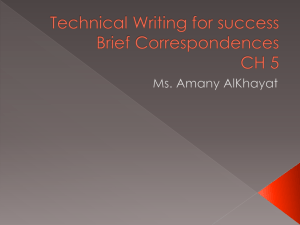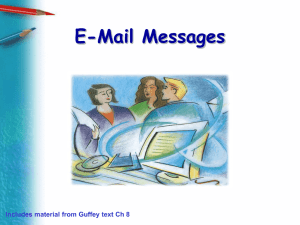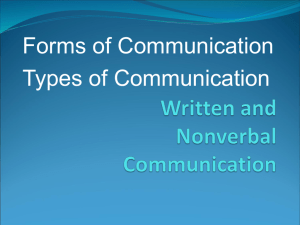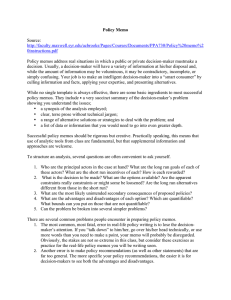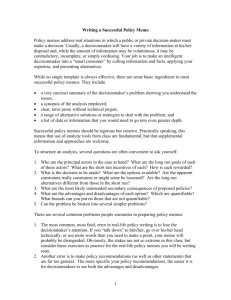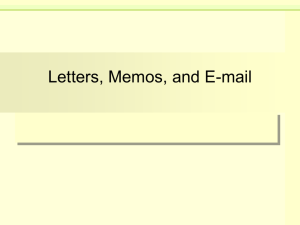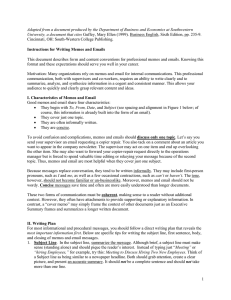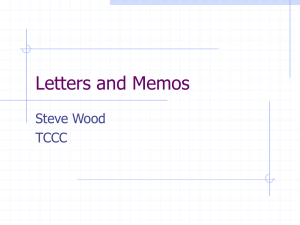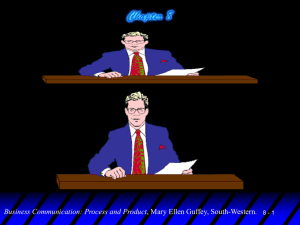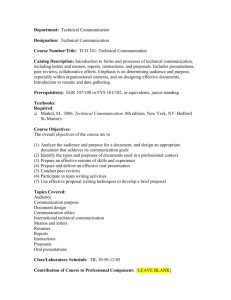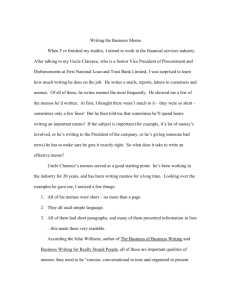Business Writing - Chicago High School for Agricultural Sciences
advertisement
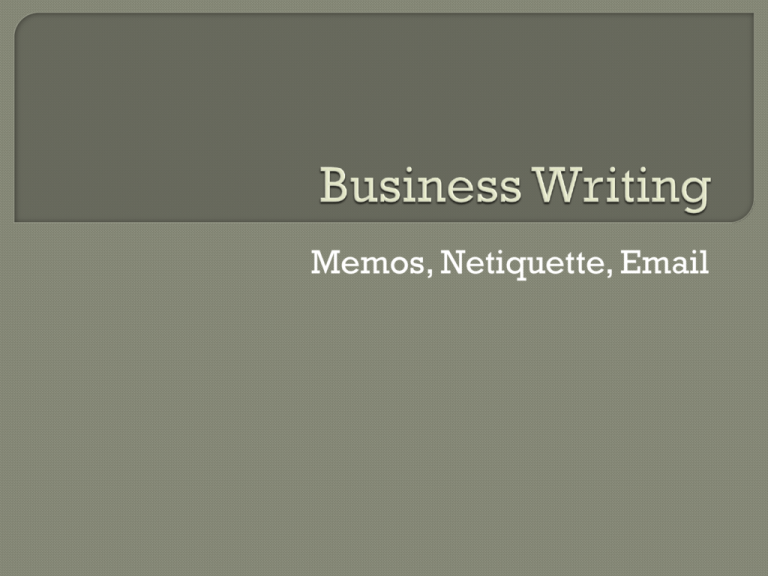
Memos, Netiquette, Email A memo is short for memorandum, which is a written reminder of something important that has occurred or will occur. Memos are used to communicate information quickly and efficiently within an organization. Memos are not usually for outside of the organization. Memos are addressed to one person, or a small group of people. A memo should be concise and focused. The reader should easily be able to understand what is being asked. Memos solve problems either by providing the reader with new information such as policy changes or price changes. Most memos communicate basic information. Memos are a form of internal communication, which means a signature and salutation are not needed. The sender signs his or her initials nest to the senders name on the from line. The memo is shorter than a formal letter and usually provides more visual cues such as bulleted or numerical lists Paragraphs are not indented and are single spaced with extra Paragraphs are not indented and are single spaced with extra space in between paragraphs. Sometimes memos are sent over email as “e-memos” to members of an organization. Writing a properly formatted email can give the receiver a good first impression. Starting off: Let readers know right away what the message is about. –Title of the Email Keep it short: Emails should be no more than two screens of information. If it is make it an attachment. How to send it: Do not overuse the “high priority” or “important” option. For emails to many recipients, use BCC (blind carbon copy)- Any email in the in the BCC will not be seen by other recipients. Tone: For most emails you should use a conversational tone. Tone: Emails written to professionals should always include proper grammar, punctuation, and spelling because your email may be the recipients first impression of you. Do not use acronyms in an email. Ending: Let readers know what you expect from them. If you want them to respond say so. Etiquette is the proper way of conduct in a given setting. Netiquette (internet etiquette) is the set of common rules that govern how to send and receive email properly. Be Polite Answer email promptly, especially if the email is requesting something. Keep messages short Edit and proofread carefully, especially if the relationship is strictly professional. Avoid long paragraphs- Paragraphs should be between 2-3 sentences long to make the email easy to read. Keep signature block (at the bottom of the message) short. When sending a business email the signature block should contain your name, title, phone number, email, and mailing address. It is best not to include your favorite song lyrics or quote of the day. Use CPS email (or other professional email) for school communication and for job applications. The use of emoticons should be minimal in a professional email. Do not type in all capital letters. It is considered shouting, and can be difficult to read. Do not use email to discuss confidential information Only send attachments that are necessary and pertain to the message A personal statement is a statement about how your personal, familial, academic, and professional experiences and background qualify you for a particular job, scholarship, or collage program The personal statement explains why you are applying for a particular job, scholarship, or college program. There are two types of personal statements. General: the topic is relatively open, with just a few guidelines and you write about yourself Specific: the topic is assigned to you. • Example: Describe an ethical dilemma you once faced, assess your oral and written communication skills. Answer all parts of a personal statement prompt. The general questions asked for a personal statement are: • What is unique about your background or life story? • Which details in your story influenced your growth? • When did you become interested in this field? What specific experiences furthered this interest? General Questions continued. • What are your career goals? • Which personal characteristics or skills would enhance your prospects for success in the professional world (or in college)? Find an idea that ties your essay together Be positive and upbeat-this is about you Be honest- don’t make up information Write in first person Pick 2-4 main points for a one page single spaced essay A personal statement is not a life story Proofread extensively to ensure that your personal statement is absolutely free of spelling, grammatical and punctuation mistakes Do not try to be funny, your humor can be missed by the selection committee Do not use vague, empty terms such as meaningful, beautiful, challenging, invaluable, or rewarding. When you edit your statements ask the following questions • Are my goals well articulated? • DO I explain why I selected this school, or program in particular? • Do I include interesting details that prove my claims about myself? • Is my tone confident?
